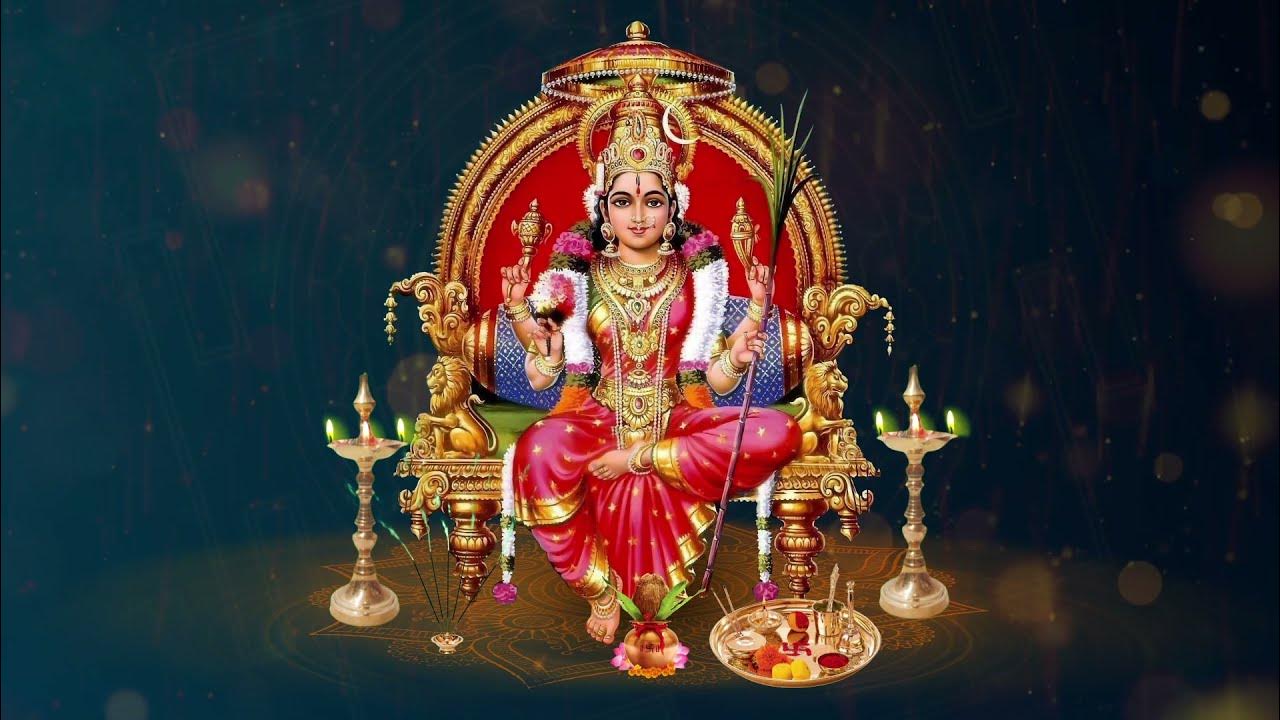Understanding Sri Lalita Devi Story and Her Significance
The Lalitopakhyana is a mythological story about the victory of Lalita Devi over the demon Bhandasura. The story is told in various Puranas and Tantras, and it is a popular theme in Hindu art and literature.
The story begins with the birth of Bhandasura, a powerful demon who is born from the ashes of Kamadeva, the god of love. Bhandasura is a cruel and ruthless ruler, and he soon establishes his own kingdom. He begins to oppress the gods and humans, and he threatens to destroy the world.
The gods, led by Shiva and Vishnu, could not defeat Bhandasura alone. They turn to Lalita Devi, the supreme goddess, for help. Lalita Devi agrees to help the gods and manifests herself in her full cosmic form.
Lalita Devi is a beautiful and powerful goddess. She wields various weapons and implements, including a sword, a bow and arrow, a noose, and a flowers. Lalita Devi confronts Bhandasura in battle. The battle was long and fierce, but Lalita Devi is victorious in the end. She defeats Bhandasura and restores order to the world.
The victory of Lalita Devi is a triumph of good over evil. It is also a reminder of the power of the divine feminine. Lalita Devi is a symbol of strength, compassion, and wisdom. She is a source of inspiration and hope for all beings.
Who Is Lalitha Devi
Lalita Devi, also known as Tripura Sundari, Rajarajeshvari, Shodashi, and Kamakshi, is a revered Hindu goddess primarily worshipped within the Shaktism tradition. She embodies the essence of the supreme goddess Mahadevi and is considered one of the ten Mahavidyas.
Here’s a breakdown of her different aspects:
As Tripura Sundari:
- Meaning “The Beautiful One of the Three Cities”
- Represents the supreme cosmic power and creative energy of the universe.
As Rajarajeshvari:
- Meaning “Queen of Queens”
- Represents absolute sovereignty and dominion.
- Associated with worldly and spiritual power, wealth, and prosperity.
As Shodashi:
- Meaning “Sixteen-Moon-Faced”
- Represents 16 aspects of the lunar cycle and the cyclical nature of creation and destruction.
- Often depicted as seated on a lotus flower holding a book and a rosary.
As Kamakshi:
- Meaning “One whose eyes are full of desire”
- Represents the creative and destructive power of desire.
- Associated with love, beauty, and fertility.
Lalita Devi in Hinduism
- Plays a key role in the Lalitopakhyana, a mythological story where she defeats the demon Bhandasura.
- Worshipped through various rituals and practices, including chanting the Lalita Sahasranama (a hymn with 1000 names of the goddess) and meditating on the Sri Chakra (a geometric diagram representing her cosmic form).
- Believed to grant liberation, moksha, and fulfillment of desires.
Beyond Hinduism
- Lalita Devi has also inspired poets, artists, and musicians throughout history.
- Her image and symbolism are found in various forms of Indian art and culture.

